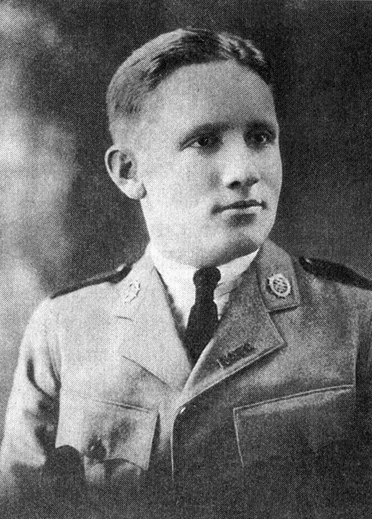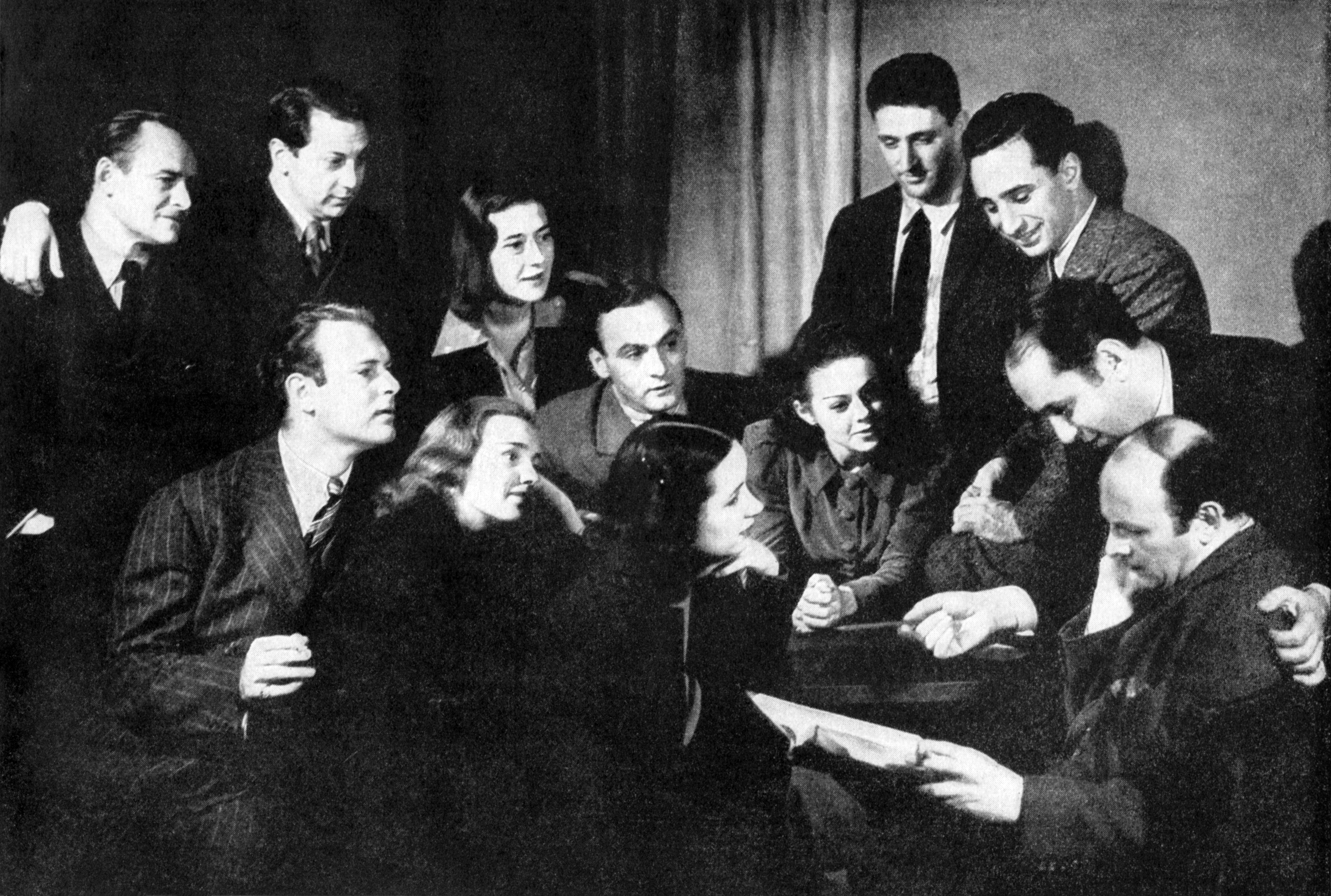|
Conrad Richter
Conrad Michael Richter (October 13, 1890 – October 30, 1968) was an American novelist whose lyrical work is concerned largely with life on the American frontier in various periods. His novel '' The Town'' (1950), the last story of his trilogy ''The Awakening Land'' about the Ohio frontier, won the 1951 Pulitzer Prize for Fiction. His novel ''The Waters of Kronos'' won the 1961 National Book Award for Fiction. Two collections of short stories were published posthumously during the 20th century, and several of his novels have been reissued during the 21st century by academic presses. Early life Conrad Michael Richter was born in 1890 in Tremont, Pennsylvania, near Pottsville, to John Absalom Richter, a Lutheran minister, and Charlotte Esther (née Henry) Richter. His grandfather, uncle and great-uncle were also Lutheran ministers, and descended from German colonial immigrants. As a child, Richter lived with his family in several small central Pennsylvania mining towns, where he en ... [...More Info...] [...Related Items...] OR: [Wikipedia] [Google] [Baidu] |
Pine Grove, Schuylkill County, Pennsylvania
Pine Grove is a borough in Schuylkill County, Pennsylvania, United States. As of the 2020 census, the borough population was 2,054. Pine Grove Area School District, serving students from three municipalities and multiple surrounding townships, is located in the town. History Pine Grove was officially incorporated in 1830 or 1832, although European settlement of the area—particularly by German Palatines—predates this official foundation date by at least a few decades. For example, historical records attest to Jacob Gunkle building a Lutheran church in the area as early as 1782. The historic, existing home Nutting Hall was built between 1823 and 1825. ''Note:'' This includes Both Nutting Hall and the surrounding Pine Grove Historic District are listed on the National Register of Historic Places. The 335-seat Pine Grove Theatre, which is also part of the Pine Grove Historic District, opened in 1910 and is still up and running . ''Note:'' This includes Geography The Swata ... [...More Info...] [...Related Items...] OR: [Wikipedia] [Google] [Baidu] |
Frederic Taber Cooper
Frederic Taber Cooper Ph.D. (May 27, 1864 – May 20, 1937) was an American editor and writer. Life Cooper was born in New York City, graduated from Harvard University in 1886 and obtained an LL.B. from Columbia University in 1887."Frederic T. Cooper; Writer Educator." ''New York Times''. 21 May 1937: 21.Rossiter Johnson, ed. "Frederic Taber Cooper." ''The Twentieth Century Biographical Dictionary of Notable Americans''. Vol 2. Boston: The Biographical Society, 1904. On November 29, 1887, he married Edith Redfield in New York. May 1898, New York: Winthrop Press, 1898. Page 87. Edith's father Amasa A. Redfield was a New York attorney and author. In 1888, he was admitted to the New York Bar, but promptly abandoned the practice of law. ... [...More Info...] [...Related Items...] OR: [Wikipedia] [Google] [Baidu] |
The Trees (Richter Novel)
''The Trees'', the first novel of Conrad Richter's trilogy ''The Awakening Land trilogy, The Awakening Land'', is set in the wilderness of central Ohio (c. 1795). The simple plot — composed of what are essentially episodes in the life of a pioneer family before the virgin hardwood forest was cut down — is told in a third-person narration rich with folklore and suggestive of early backwoods speech. The central character is Sayward Luckett, the eldest daughter in a family who the narrator says "followed the woods as some families follow the sea." The book was published by Alfred A. Knopf in 1940. ''The Trees'' was followed by ''The Fields (novel), The Fields'' (1946) and ''The Town (1950 novel), The Town'' (1950). A single-volume trilogy was published in 1966. Plot summary Worth Luckett is a "woodsy" who provides for his family by hunting wild animals for food and trading their pelts for other commodities they need. When Worth notices that the wild game is leaving the ... [...More Info...] [...Related Items...] OR: [Wikipedia] [Google] [Baidu] |
Columbus Dispatch
''The Columbus Dispatch'' is a daily newspaper based in Columbus, Ohio. Its first issue was published on July 1, 1871, and it has been the only mainstream daily newspaper in the city since ''The Columbus Citizen-Journal'' ceased publication in 1985. As of November 2019, Alan D. Miller is the newspaper's interim general manager. History The paper was founded in June 1871 by a group of 10 printers with 900 in financial capital. The paper published its first issue as ''The Daily Dispatch'' on July 1, 1871, as a four-page paper which cost 4¢ (¢ in ) per copy. The paper was originally an afternoon paper for the city of Columbus, Ohio, which at the time had a population of 32,000. For its first few years, the paper rented a headquarters on North High Street and Lynn Alley in Columbus. It began with 800 subscribers. On April 2, 1888, the paper published its first full-page advertisement, for the Columbus Buggy Company. In 1895, the paper moved its headquarters to the northeast corn ... [...More Info...] [...Related Items...] OR: [Wikipedia] [Google] [Baidu] |
The Light In The Forest (film)
''The Light in the Forest'' is a 1958 American Western historical fiction drama film based on a novel of the same name first published in 1953 by American author Conrad Richter. The film was produced by Walt Disney Productions and stars Fess Parker, Joanne Dru, James MacArthur and Wendell Corey. Though it is a work of fiction and primarily features fictional characters, the novel incorporates several real people and facts from American history. Plot In 1764 Pennsylvania, a young white boy raised by Native Americans and given the name True-son, is forced to return to white society following the signing of a peace treaty. True-son, Johnny was his birth name, not wanting to leave his adoptive Indian family, tries to kill himself by eating a poisonous plant on the march back to his white family. Del/Fess Parker, stops him. True-son’s Indian cousin joins him on the way to bring him gifts and messages from his Indian father. After True-son/Johnny’s Indian cousin goes as fa ... [...More Info...] [...Related Items...] OR: [Wikipedia] [Google] [Baidu] |
Lenape People
The Lenape (, , or Lenape , del, Lënapeyok) also called the Leni Lenape, Lenni Lenape and Delaware people, are an indigenous peoples of the Northeastern Woodlands, who live in the United States and Canada. Their historical territory included present-day northeastern Delaware, New Jersey and eastern Pennsylvania along the Delaware River watershed, New York City, western Long Island, and the lower Hudson Valley. Today, Lenape people belong to the Delaware Nation and Delaware Tribe of Indians in Oklahoma; the Stockbridge–Munsee Community in Wisconsin; and the Munsee-Delaware Nation, Moravian of the Thames First Nation, and Delaware of Six Nations in Ontario. The Lenape have a matrilineal clan system and historically were matrilocal. During the last decades of the 18th century, most Lenape were removed from their homeland by expanding European colonies. The divisions and troubles of the American Revolutionary War and United States' independence pushed them farther west. In ... [...More Info...] [...Related Items...] OR: [Wikipedia] [Google] [Baidu] |
Spencer Tracy
Spencer Bonaventure Tracy (April 5, 1900 – June 10, 1967) was an American actor. He was known for his natural performing style and versatility. One of the major stars of Hollywood's Golden Age, Tracy was the first actor to win two consecutive Academy Awards for Best Actor from nine nominations. During his career, he appeared in 75 films and developed a reputation among his peers as one of the screen's greatest actors. In 1999, the American Film Institute ranked Tracy as the 9th greatest male star of Classic Hollywood Cinema. Tracy first discovered his talent for acting while attending Ripon College, and he later received a scholarship for the American Academy of Dramatic Arts. He spent seven years in the theatre, working in a succession of stock companies and intermittently on Broadway. His breakthrough came in 1930, when his lead performance in ''The Last Mile'' caught the attention of Hollywood. After a successful film debut in John Ford's ''Up the River'' (in ... [...More Info...] [...Related Items...] OR: [Wikipedia] [Google] [Baidu] |
Katharine Hepburn
Katharine Houghton Hepburn (May 12, 1907 – June 29, 2003) was an American actress in film, stage, and television. Her career as a Hollywood leading lady spanned over 60 years. She was known for her headstrong independence, spirited personality, and outspokenness, cultivating a screen persona that matched this public image, and regularly playing strong-willed, sophisticated women. Her work was in a range of genres, from screwball comedy to literary drama, and earned her various accolades, including four Academy Awards for Best Actress—a record for any performer. In 1999, Hepburn was named the greatest female star of classic Hollywood cinema by the American Film Institute. Raised in Connecticut by wealthy, progressive parents, Hepburn began to act while at Bryn Mawr College. Favorable reviews of her work on Broadway brought her to the attention of Hollywood. Her early years in film brought her international fame, including an Academy Award for Best Actress for her thir ... [...More Info...] [...Related Items...] OR: [Wikipedia] [Google] [Baidu] |
Elia Kazan
Elia Kazan (; born Elias Kazantzoglou ( el, Ηλίας Καζαντζόγλου); September 7, 1909 – September 28, 2003) was an American film and theatre director, producer, screenwriter and actor, described by ''The New York Times'' as "one of the most honored and influential directors in Broadway and Hollywood history". Born in Constantinople (now Istanbul), to Cappadocian Greek parents, his family came to the United States in 1913. After attending Williams College and then the Yale School of Drama, he acted professionally for eight years, later joining the Group Theatre in 1932, and co-founded the Actors Studio in 1947. With Robert Lewis and Cheryl Crawford, his actors' studio introduced "Method Acting" under the direction of Lee Strasberg. Kazan acted in a few films, including ''City for Conquest'' (1940). His films were concerned with personal or social issues of special concern to him. Kazan writes, "I don't move unless I have some empathy with the basic theme." His ... [...More Info...] [...Related Items...] OR: [Wikipedia] [Google] [Baidu] |
The Sea Of Grass (film)
''The Sea of Grass'' is a 1947 American Western film set in the American Southwest. It was directed by Elia Kazan and based on the 1936 novel of the same name by Conrad Richter. The film stars Katharine Hepburn, Spencer Tracy, and Melvyn Douglas. Kazan was reportedly displeased with the resulting film and discouraged people from seeing it. Plot summary The film opens in St. Louis, Missouri, on Lutie Cameron's ( Katharine Hepburn) wedding day. She has had a short courtship with a cattle rancher of New Mexico. As she dresses, she receives a telegram from her fiancé Col. Brewton (Spencer Tracy) telling her to board the train for New Mexico to marry him in the small town of Salt Fork. The first person she meets in town is Brice Chamberlain (Melvyn Douglas), who warns her of likely unhappiness with Brewton, locally considered a tyrant. He takes her to the courthouse, where she sees Brewton testifying against a settler who had tried to stake a claim to part of the government-owne ... [...More Info...] [...Related Items...] OR: [Wikipedia] [Google] [Baidu] |
Pulp Magazines
Pulp magazines (also referred to as "the pulps") were inexpensive fiction magazines that were published from 1896 to the late 1950s. The term "pulp" derives from the cheap wood pulp paper on which the magazines were printed. In contrast, magazines printed on higher-quality paper were called "glossies" or "slicks". The typical pulp magazine had 128 pages; it was wide by high, and thick, with ragged, untrimmed edges. The pulps gave rise to the term pulp fiction in reference to run-of-the-mill, low-quality literature. Pulps were the successors to the penny dreadfuls, dime novels, and short-fiction magazines of the 19th century. Although many respected writers wrote for pulps, the magazines were best known for their lurid, exploitative, and sensational subject matter, even though this was but a small part of what existed in the pulps. Successors of pulps include paperback books, digest magazines, and men's adventure magazines. Modern superhero comic books are sometimes considered ... [...More Info...] [...Related Items...] OR: [Wikipedia] [Google] [Baidu] |
New Mexico
) , population_demonym = New Mexican ( es, Neomexicano, Neomejicano, Nuevo Mexicano) , seat = Santa Fe , LargestCity = Albuquerque , LargestMetro = Tiguex , OfficialLang = None , Languages = English, Spanish ( New Mexican), Navajo, Keres, Zuni , Governor = , Lieutenant Governor = , Legislature = New Mexico Legislature , Upperhouse = Senate , Lowerhouse = House of Representatives , Judiciary = New Mexico Supreme Court , Senators = * * , Representative = * * * , postal_code = NM , TradAbbreviation = N.M., N.Mex. , area_rank = 5th , area_total_sq_mi = 121,591 , area_total_km2 = 314,915 , area_land_sq_mi = 121,298 , area_land_km2 = 314,161 , area_water_sq_mi = 292 , area_water_km2 = 757 , area_water_percent = 0.24 , population_as_of = 2020 , population_rank = 36th , 2010Pop = 2,117,522 , population_density_rank = 45th , 2000DensityUS = 17.2 , 2000Density = 6.62 , MedianHouseholdIncome = $51,945 , IncomeRank = 45th , AdmittanceOrder = ... [...More Info...] [...Related Items...] OR: [Wikipedia] [Google] [Baidu] |





